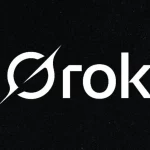A 25-year-old California man, Ryan Mitchell Kramer, has pleaded guilty to orchestrating a sophisticated cyberattack on Disney, leveraging a malicious AI tool to steal 1.1 terabytes of sensitive corporate data. The 2024 breach, one of the largest in Disney’s history, exposed a trove of internal information, including financial strategies, employee records, and customer data, raising alarms about the growing threat of AI-driven cyberattacks in the tech industry. Kramer’s actions, which involved posing as a Russian hacktivist group, have highlighted vulnerabilities in corporate security practices and sparked a broader conversation about the ethical use of AI technologies.
Kramer, under the pseudonym “NullBulge,” admitted to two felony charges: unauthorized access to a computer to obtain information and threatening to damage a protected computer, each carrying a potential five-year prison sentence. His method involved distributing a fraudulent AI image generation app called ComfyUI_LLMVISION on GitHub, which he marketed as an extension of the legitimate ComfyUI tool. Unbeknownst to users, the app contained malicious code designed to harvest sensitive data, such as passwords and payment details. In April 2024, a Disney employee downloaded the app, inadvertently granting Kramer access to personal and work accounts, including a non-public Disney Slack workspace with over 44 million messages spanning back to 2019.
The stolen data was staggering in scope, including 18,800 spreadsheets and 13,000 PDFs detailing Disney’s internal operations. This encompassed financial insights like Disney+ streaming revenue, Genie+ theme park pass sales, and pricing strategies, as well as personal information such as employee bank details, medical records, and passport numbers of Disney Cruise Line staff. Kramer escalated the breach by contacting the employee in July 2024, threatening to leak the data unless demands were met. When the employee did not respond, Kramer, posing as the fictitious NullBulge group, released the information across multiple online platforms, causing significant reputational harm to Disney and exposing the company to potential financial risks.
The breach’s aftermath was swift and far-reaching. The Wall Street Journal broke the story on July 15, 2024, prompting Disney to collaborate with the FBI, which continues to investigate the incident. The leaked data revealed intimate details of Disney’s operations, including employee assessments, software development plans, and even personal anecdotes like photos of employees’ pets. Disney issued a statement expressing relief at Kramer’s guilty plea and reaffirmed their commitment to combating cyber threats. However, the incident took a toll on the affected employee, who was terminated after a forensic analysis uncovered unrelated inappropriate content on their work device, adding a layer of controversy to the fallout.
Kramer’s cybercrime spree extended beyond Disney—he admitted to targeting two other victims who downloaded the malicious app, gaining unauthorized access to their systems as well. His use of an AI tool to perpetrate the hack underscores a troubling trend where cybercriminals exploit emerging technologies to bypass traditional security measures. The ComfyUI_LLMVISION app, marketed as a legitimate AI art generator, exploited the trust that developers and users place in platforms like GitHub, highlighting the risks of downloading unverified software in an era where AI innovation is rapidly expanding.
The Disney hack draws parallels to other high-profile breaches, such as the 2023 MOVEit supply chain attack, where vulnerabilities in third-party software led to widespread data leaks. Cybersecurity experts argue that companies must adopt more rigorous vetting processes for software downloads and enhance employee training to recognize phishing attempts or malicious apps. Disney’s response to the breach—phasing out Slack in favor of more secure alternatives like Microsoft Teams—reflects a growing awareness of these risks, but the incident has exposed gaps in how sensitive data is protected, particularly in non-public communication channels like Slack.
The legal repercussions for Kramer are pending, with his first court appearance scheduled in the coming weeks. Sentencing will depend on factors like his cooperation with authorities and the extent of the damage caused, but the potential for a decade in prison looms large. For Disney, the breach has prompted a reevaluation of its cybersecurity protocols, with a focus on securing employee devices and communication platforms. The company’s spokesperson emphasized their ongoing efforts to safeguard employee and customer data, but the incident has sparked broader discussions about the intersection of AI and cybersecurity in the corporate world.
The misuse of AI in this attack highlights the dual nature of the technology—while it offers immense potential for innovation, it can also be weaponized by malicious actors. As AI tools become more accessible, the risk of such attacks is likely to increase, challenging organizations to stay ahead of evolving threats. This incident serves as a wake-up call for companies to prioritize cybersecurity, particularly when adopting new technologies from open platforms. What are your thoughts on the growing threat of AI-driven cyberattacks, and how can businesses better protect themselves in this landscape? Share your perspective in the comments—we’d love to hear your insights on this critical issue.







